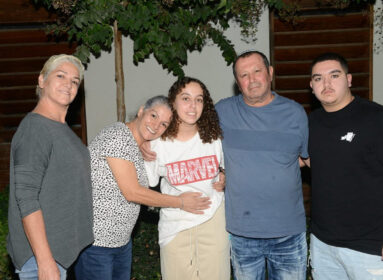
Rabbi Gary Atkins
The mohel at today’s bris may not match the traditional persona many American Jews conjure from 19th-century European imagery: the black-clad, bearded elder steeped in halachic training, bearing a “Mohel Book” and a set of special metal implements. That’s because the last generation of Europe-trained mohelim practicing in the U.S. had mostly died or retired by the 1980s, leaving many communities mohel-less.
To address the shortage, both the Conservative and Reform movements created training programs in the late ’80s for physicians. Rabbi Gary Atkins of Beth Hillel Synagogue in Bloomfield was among the first instructors in the Jewish Theological Seminary program. Among his students at a 2003 course was Dr. Neil Pollock, a urologist and medical director of The Pollock Clinics in British Columbia, which specialize in infant circumcision. Atkins is a trained mohel who was certified in 1981 by the Brit Milah Commission of the Philadelphia Board of Rabbis and earned a certificate of study from the Brit Kodesh program of the Rabbinical Assembly.
Pollock and Atkins combined forces and started Brit Kodesh, offering private mohel training to physicians in both the halachic and medical aspects of ritual circumcision.
More likely than not, today’s mohel may be an MD, and even a woman. While men traditionally have taken on the role, women have been allowed to be mohalot from the start, Atkins says. In the Book of Exodus, there is a chapter describing how Tziporah circumcises her son, Gershom. In the Shulchan Aruch, the Code of Jewish Law written in the 16th century, the section addressing brit milah begins by stating that every Jew is eligible or capable of being a mohel, including women. Today, there are mohalot in the Conservative and Reform movements.
Over a six-day period in early May, Pollock and Atkins offered the Brit Kodesh training to physicians, sponsored by the Rabbinical Assembly in cooperation with the Jewish Theological Seminary. The class of 12 comprised pediatricians, obstetrician-gynecologists, urologists, and general practitioners. They came from throughout New England and from as far west as Nevada and Tennessee, each involved enough in their respective Jewish communities to be recommended by their congregational rabbis, Atkins says.
At this year’s Brit Kodesh course, Atkins was struck by the contemporary tone of the discussion.
“There was an increased recognition of the ‘interface’ of modern life with questions of milah,” he says. “Participants raised questions such as surrogate parenthood and gay couples adopting, artificial insemination, and even broadcasting a bris on the Internet via Skype. I am very happy to see the enthusiasm that these doctors have in doing these mitzvot, and incorporating this new part of their lives.”
There’s the training, and then there’s the practice. A prospective mohel spends a lot of time watching a pro and simulating the doing with their hands under supervision, Atkins says, until the master feels that the student is ready to perform the ritual on his own. Students can watch a video by Pollock on the mohel training website, and pattern after the technique until it’s ingrained.
Aside from steady hands, parents tend to be most concerned about the potential pain or discomfort of their baby, Atkins says.
“There’s a lot of recent research on pain in infants, and we won’t say today that the baby doesn’t feel anything,” Atkins says. “But a baby cries for a lot of reasons: he’s on his back, his arms and legs are restrained, and his diaper is off. Neurologically, research indicates that his nervous system hasn’t developed completely so that he can localize a pain sensation.”
Many trained mohel-physicians can inject a local anesthetic or a administer a topical anesthetic cream, but Atkins relies on the traditional sweet wine or sugar water to induce a drowsy effect, preceded by a numbing spray and followed by a topical anesthetic.
Among the students in the latest Brit Kodesh course were four women, one of who has studied privately with Atkins. A board-certified ob-gyn and mohel, Dr. Emily J. Blake has performed thousands of circumcisions since 1990 and covers for Atkins on occasion.
“Through my medical training, I had become skilled in performing circumcision, but my Jewish identity led me to question the difference between a medical circumcision and the brit milah,” says Blake, who works throughout the Northeast. “I was moved to obtain the religious training that would allow my medical abilities to be guided by a profound spiritual intent.”
For more information: www.moheltraining.com








 Southern New England Jewish Ledger
Southern New England Jewish Ledger












